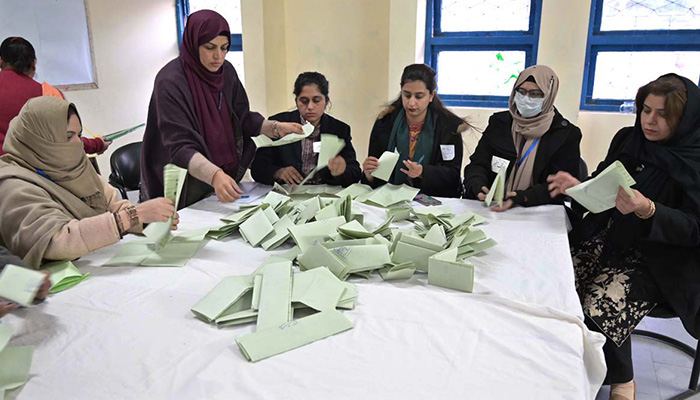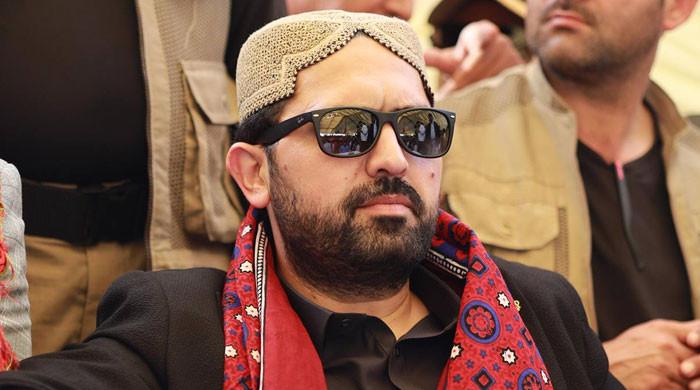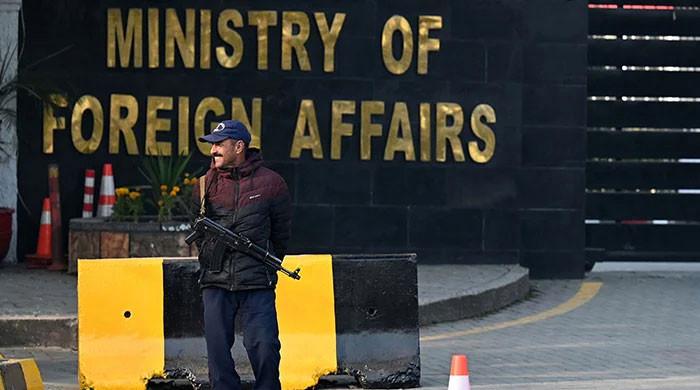Fafen seeks three-stage methodology to audit 2024 election results amid rigging claims
Election observer urges ECP to use data analytics, forensics during poll results' audit
February 18, 2024

- First stage involves assessing authentication of poll documentation.
- Second stage involves ascertaining material effort of unverified forms.
- Third stage involves determination of accountability of poll officials.
ISLAMABAD: Amid the latest developments which increased doubts on election results’ compilation after the 2024 nationwide polls, a non-government poll observer, Free and Fair Election Network (Fafen), proposed a three-stage methodology for the audit of the vote outcomes.
“The results of constituencies that have been duly challenged by political parties and candidates at the appropriate legal fora should be scrutinised,” the observer said in an official statement Sunday, urging the Election Commission of Pakistan (ECP) to use data analytics and forensics to establish the legitimacy of the outcome of the February 8 general elections.
“Fafen has been advocating since 2013 for the election commission to conduct scrutiny of results of all constituencies before the notification of winners in an effort to strengthen the integrity of election outcomes and to minimise the post-election disputes that linger on in election tribunals beyond legally stipulated deadlines. The post-election situation warrants an urgent and prompt response by the ECP to ascertain the veracity of the claims of illegalities and irregularities by political parties and candidates, and as a prerequisite to establish that the GE-2024 results truly reflect the will of the people.”
“Fafen’s proposed audit is a technical investigation that is purely based on the physical evidence i.e. official election documentation available with the election commission under Section 99 of the Elections Act, 2017,” it read.
These documents include: tamper-evident bags containing (a) the packets containing the ballot papers each of which shall be sealed with the seal of the presiding officer or, if opened by the returning officer, with the seal of the returning officer; (b) the packets containing the counterfoils of issued ballot papers; (c) the packets containing the marked copies of the electoral rolls used in the poll; (d) the packets containing the Ballot Paper Account; (e) the packets containing results of the count, provisional and final consolidated statement of results of the count and final consolidated results; (f) the packets containing the Tendered Ballot Papers included in the count; the Tendered Ballot Papers excluded from the count; the Tendered Votes List, and the Challenged Ballot Papers included in the count; the Challenged Ballot Papers excluded from the count; the Challenged Votes List; and the Spoilt Ballot Papers; and (g) such other papers as the commission may direct.
The proposed election result audit methodology comprises the following three stages:
- The first stage involves assessing the availability, authentication, completeness and correctness of the election documentation including the result forms, and the consistency of information within and amongst these forms.
- The second stage involves the ascertainment of the material effect of unverified forms on election outcomes and taking corrective action.
- The third stage involves the determination of the omission and commission and accountability of election officials.
“For the conduct of the election, the top electoral body performs its duties through its staff as well as with the support of the human resources taken from the executive and judiciary. The extensive logistical undertaking involved in conducting general elections for both federal and provincial assemblies requires the deployment of hundreds of thousands of officials seconded by the federal and provincial governments. For the general elections 2024, nearly 1.5 million election and polling officials were appointed. These officials managed the election operations including the counting, tabulation, and consolidation of results, which has led to controversies and disputes.”
The election process entails an exhaustive list of forms to be maintained to document every step of the process including the results. This documentation establishes an entire trail of the results to refer to in case of any controversy. However, these forms are never referred to after their preparation, save in case of an election petition that also remain undecided in many cases for several years.
Since most challenges to election results revolve around Form-45 and their subsequent consolidation, the observer urges the ECP to also clarify the legality of multiple copies of the forms that are generated on Election Day.
Under the Election Act, 2017 and its corresponding rules, there are multiple copies of Form 45:
- copy sealed by the presiding officer in a temper-evident bag that is placed in the bag of election material
- picture of Form-45 transmitted by the presiding officer to the returning officer through mobile app
- original copy sealed in a temper-evident bag by the Presiding Officer for physically delivering it to the Returning Officer
- copy that is affixed by the Presiding Officer outside the polling stations
- copy that is retained by the Presiding Officer for own record
- copy sealed in a temper-evident bag by the Presiding Officer for dissemination to the District Election Commissioner
- copies that are given by the Presiding Officer to polling agents at the polling stations
- copy that is given by the Presiding Officer to the observer. The Elections Act, 2017 does not establish which copy will be considered legal in case the available and produced copies are different and duly signed and there is a dispute.
The poll observer has also called upon the ECP to encourage the political parties and candidates to promptly reach out to it with their complaints of illegalities and violations of the Elections Act, 2017.
“According to Section 9(1) of the Act, if, from facts apparent on the face of the record and after such enquiry as it may deem necessary, the Commission is satisfied that by reason of grave illegalities or such violations of the provisions of this Act or the Rules, as have materially affected the result of the poll at one or more polling stations or in the whole constituency including implementation of an agreement restraining women from casting their votes, it shall make a declaration accordingly and call upon the voters in the concerned polling station or stations or in the whole constituency as the case may be, to recast their votes in the manner provided for bye-elections.”
“The commission may exercise these powers before the expiration of sixty days after publication of the name of returned candidate in the official gazette; and, where the poll organising authority does not finally dispose of a case within the said period, the election of the returned candidate shall be deemed to have become final, subject to the decision of an election tribunal on an election petition, if any. While exercising these powers, the ECP shall be deemed to be an election tribunal to which an election petition has been presented. Any person aggrieved by a declaration of the Commission under this section may, within thirty days of the declaration, prefer an appeal to the Supreme Court,” it concluded.









